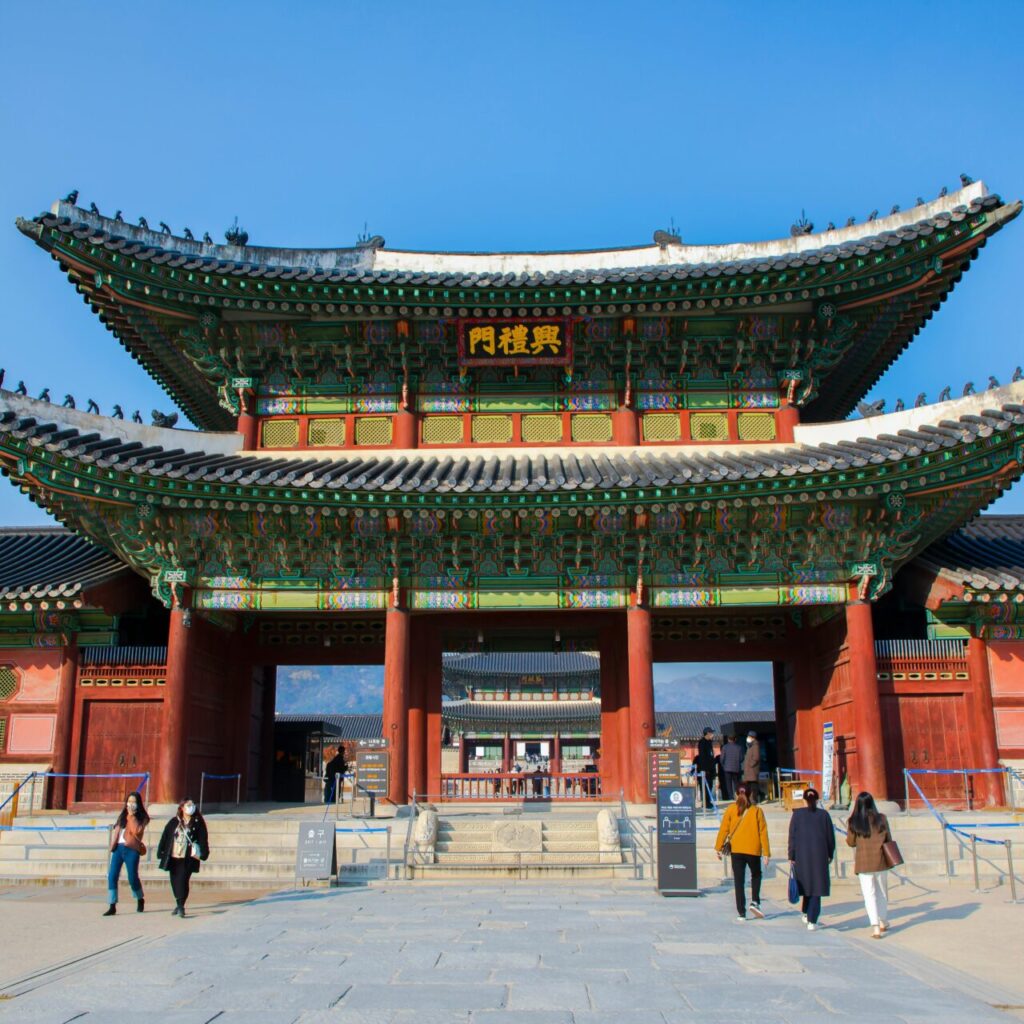Written byLoris Gautier
Posted onMay 7, 2024
The Gyeongbokgung Palace, an architectural gem nestled in the heart of Seoul, represents one of the finest testimonies to Korean history and culture. This article invites you to delve into the fascinating world of this historic site, which continues to captivate visitors from all over the world with its rich history and impressive architecture. Let's find out why Gyeongbokgung Palace is considered a must-see for anyone visiting South Korea.

Gyeongbokgung Palace, often referred to as the "Palace of Resplendent Happiness", is the largest of the five palaces built under the Joseon dynasty. Founded in 1395 by King Taejo, it served as the principal residence of the Joseon kings and as the administrative center of the kingdom. Despite numerous destructions and reconstructions over the centuries, notably during the Japanese invasion in the 16th century and the Japanese occupation in the early 20th century, the palace has been meticulously restored to preserve its historic authenticity.
The restoration of Gyeongbokgung in the 1990s and early 2000s symbolizes the national effort to recover Korea's cultural heritage and restore national pride. Today, it represents not only Korea's ancient history but also its resilience in the face of external adversity.
The architecture of Gyeongbokgung is an outstanding example of traditional Korean building art, harmoniously integrating the palace into its natural surroundings. The buildings are laid out according to the principles of feng shui and Korean geomancy, which were thought to promote the prosperity and stability of the kingdom. The palace complex comprises several majestic halls, pavilions and gardens, arranged to reflect cosmic order.
Among Gyeongbokgung's must-see attractions is the Gyeonghoeru Pavilion, an elegant structure set on 48 stone columns and surrounded by a magnificent pond, often used for royal banquets. The Throne Hall Geunjeongjeon, where the Joseon kings held official audiences, impresses with its size and detailed décor. And let's not forget the Changing of the Guard, a colorful and accurate re-enactment that takes place at the palace's main entrance and attracts crowds for its vibrant spectacle.
Gyeongbokgung Palace doesn't just serve as a tourist attraction; it's also a vibrant center of Korean culture. Throughout the year, the palace hosts various cultural events such as festivals, traditional dance performances and ceremonies that allow visitors to immerse themselves in Korean traditions. It's an open window on the past, offering an educational experience that enriches visitors' knowledge of Korea.
Every year, millions of tourists visit Gyeongbokgung, drawn by its beauty and history. It plays a crucial role in Seoul's tourism economy, helping to promote Korean history and culture on a global scale. The site also provides a spectacular backdrop for photos, making it a favorite among visitors looking to capture the essence of Korea.
Gyeongbokgung Palace is much more than just a historical monument. It is the beating heart of Korea, a place where history, culture and beauty meet. Whether you're a history buff, an architecture enthusiast, or simply looking for an immersive experience, Gyeongbokgung offers a unique window into the soul of Korea. To visit this palace is to walk in the footsteps of kings and relive the pages of Korean history in all their splendor.
Gyeongbokgung Palace is open almost all year round, generally from 09:00 to 18:00, with seasonal variations. It is closed every Tuesday.
It's not compulsory to buy tickets in advance, but to avoid queues, especially during the high tourist season, it's advisable to buy them online.
Standard admission is 3,000 won for adults and 1,500 won for children. Reduced rates are available for groups, and guided tours are offered at an additional cost.
Yes, several main buildings are open to visitors, but some may be temporarily inaccessible due to restoration work. It is advisable to check the condition of openings before visiting.
For a full tour of the palace, including time for photos and cultural activities, allow at least two to three hours.
Did you like our article?
Don't hesitate to subscribe to our free, spam-free newsletter!
It is located at 161, Sajik-ro, Jongno-gu, Seoul. This historic palace is easily accessible by public transport, being close to the Gyeongbokgung station on line 3 of the Seoul metro.